Get to Know the Land You’re Destroying (or Saving)
13 Jun
It’s easy to disparage or destroy people, animals, plants or things when we know little about them. It’s a psychological thing. This phenomenon underlies lots of the more unpleasant activities in our world, like how we treat people who are ‘different’ than us, how we wage war on the living world in general, and the strategy many use in dealing with radicals; if we Demonize and Marginalize them, it’s easier to disparage and dismiss them, and to disrupt or destroy them. For example, we see this in how ranchers refer to Prairie Dogs as ‘pests’ – when Dogs are labelled as such, it’s easier to gas them, you know? After all, they destroy all that good ranch land, and dig holes that cattle and horses break their legs in, right? Right?
Of course, that’s all B.S. The larger issue is that when we cultivate familiarity with the world around us, we’re much less likely to wage war against it. In that vein, we introduce a ‘sometimes’ feature here to make you more familiar with aspects of the world you may know or care little about. And maybe you’ll be less likely to summarily dismiss or endanger that world.
Our first entry comes courtesy of The Jornada.
7 Things You Didn’t Know About Creosote Bush
Submitted by Johnny Ramirez on Thu, 2015-04-30 16:41
If you are familiar with the Chihuahuan Desert, you will recognize the creosote bush (Larrea tridentata) as ubiquitous. It is common throughout Western North America, and it’s becoming even more common. Creosote bush has a unique set of evolutionary adaptations that allows it to outcompete many other plants in its ecosystems, given the right opportunities.
They only “breathe” in the mornings
 Rain is rare in the desert, and any plant has to be able to get as much of it as it can while losing as little of it as possible. The problem all plants face is that they must “breathe” in carbon dioxide through openings on the underside of their leaves called stomata, but doing so means they lose water. This becomes a big problem when it is especially hot and dry as it always is during the day in the desert. So the creosote bush only opens its stomata in the mornings when the humidity is relatively high and the loss of water is the lowest. It is during this time that creosote bush undergoes photosynthesis, and shuts it down when the sun rises higher. This is also why …
Rain is rare in the desert, and any plant has to be able to get as much of it as it can while losing as little of it as possible. The problem all plants face is that they must “breathe” in carbon dioxide through openings on the underside of their leaves called stomata, but doing so means they lose water. This becomes a big problem when it is especially hot and dry as it always is during the day in the desert. So the creosote bush only opens its stomata in the mornings when the humidity is relatively high and the loss of water is the lowest. It is during this time that creosote bush undergoes photosynthesis, and shuts it down when the sun rises higher. This is also why …
Creosote bush always faces southeast
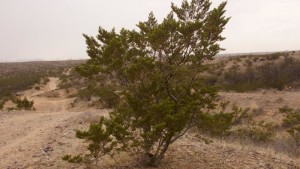
Since the plant photosynthesizes only in the mornings when humidity is highest, it needs to maximize the amount of sunlight it receives during that time. Its branches and leaves grow in a shape meant to capture as much morning sunlight as possible. As the sun gets higher and the air drier, it will close its stomata and shut down its photosynthesis. While this may seem like not using the sunlight is wasted potential, it is in fact a smart move since it saves water. And in the desert it is always water, not sunlight that limits plant growth.
Creosote bush will grow in different shapes depending on what it needs
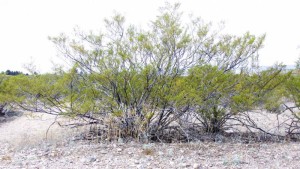 A cone shape allows creosote bush to channel rain down its stems so that the water goes deeper into the soil and the roots have more time to absorb it. It can also grow into a hemisphere, an upside down bowl shape that allows leaf litter and other organic material to collect beneath its branches. This creates an island of fertility that allows other plants and animals to live underneath, creating a rich soil that is full of nutrients for the creosote bush.
A cone shape allows creosote bush to channel rain down its stems so that the water goes deeper into the soil and the roots have more time to absorb it. It can also grow into a hemisphere, an upside down bowl shape that allows leaf litter and other organic material to collect beneath its branches. This creates an island of fertility that allows other plants and animals to live underneath, creating a rich soil that is full of nutrients for the creosote bush.
Creosote cultivates a microbial community on its branches
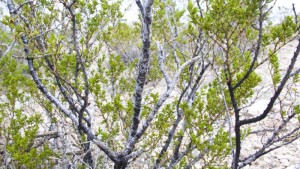
On many creosote bushes you will see black areas on some branches. This is a microbial community of algae, fungi, and bacteria that in exchange for a place to live, gives the plant nutrients as rainwater flows over it and into the soil. It is from a combination of this and dust that has settled on its branches between storms that allows creosote bush to pick up 9 times as much phosphorus and 16 times as much nitrogen than is in regular rainwater. These nutrients are rare in the desert and give the plant a huge leg up over its competition.
People once used a compound derived from creosote to preserve food

Nordihydroguaiaretic acid is a powerful antioxidant that the creosote bush produces for protection. When it was discovered in the 1930s, people would extract it from the plant and use it to keep food from spoiling. This practice ended in the 70s when the FDA discontinued its use in food, but recent research on the chemical has found some promise in its ability to reduce cancerous tumors in animals.
Its unique smell is the result of many compounds
The smell of creosote after a good rain is the result of many volatile oils, but mostly terpene (a compound found in pines), limonene (citrus), camphor (pines and rosemary), methanol (wood alcohol), and 2-undecanone (spices).
Fire keeps creosote bush in check

The creosote bush thrives in the desert. It is so good at making efficient use of its limited resources that it will slowly overtake ecosystems like grasslands and turn them into creosote shrubland. Creosote has one weakness though, fire. Creosote bush grows slowly, and if grassland that it grows in catches fire when it is still small, it will die off while the grass grows back. Because of this, creosote bush’s natural habitat is in areas where grass has a difficult time growing. But practices like fire suppression, or overgrazing that limits how much fuel there is for fire, allows the creosote bush to take over.
Any plant you see growing is there because it is the successful result of millions of years of evolution. It has encountered and adapted to more environmental challenges than you could ever imagine. The plants of the Chihuahuan Desert where The Jornada Experimental Range is located, and where we do our research, are incredibly good at surviving a harsh desert environment. If you want to know more about how plants thrive in the desert, check out “5 things you didn’t know about Ocotillo”. Also check out some of our YouTube videos on “grasses and wildflowers of the Chihuahuan Desert.”
A special thanks to Walt Whitford for lending his expertise to this blog.
USDA-ARS the Jornada Experimental Range
Photo Credits:
Long Draw Fire Aftermath By Jeff Clark, Oregon BLM Creative Commons CC BY-SA 2.0
Creosote Flowers “Resinous” By Anne Reeves Creative Commons CC BY-ND 2.0
Chemical Structure of Nordihydroguaiaretic Acid By Edgar181
All other photos by Johnny Ramirez
Cited Publications:
Mabry, T.J.; Hunziker, J.H.; Diffo, D.R., Jr. (1977) Creosote Bush: Biology and Chemistry of Larrea in New World Deserts. Institute of Ecology.
Whitford, Walt (2014) The Remarkable Creosote. Unpublished Book Chapter.
Johnny Ramirez’s blogAdd new commentPrinter-friendly versionPrinter-friendly versionSend by emailSend by email
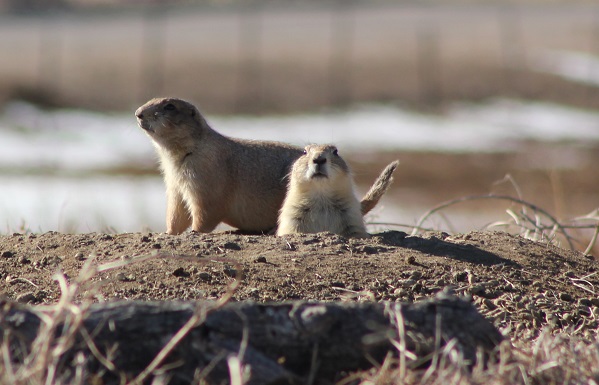
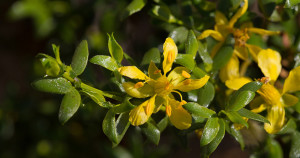

One Response to “Get to Know the Land You’re Destroying (or Saving)”